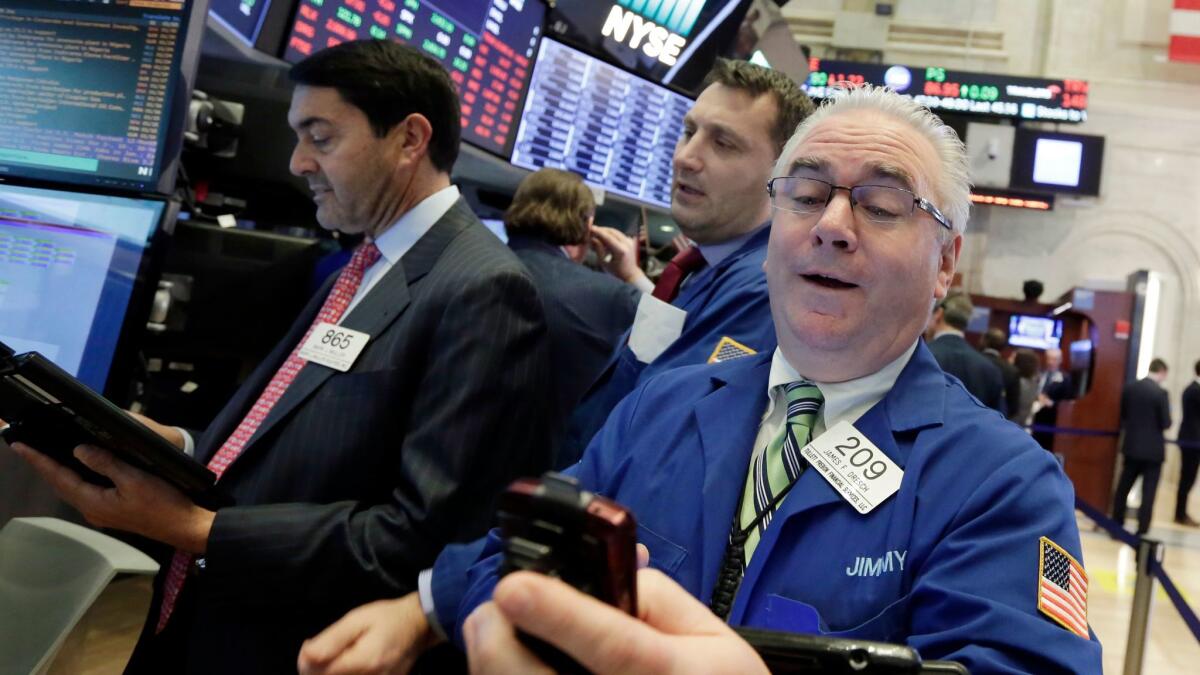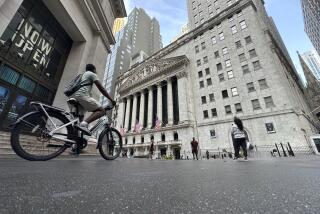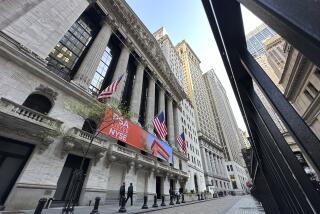Stocks dip after Fed statement, then end the day higher

U.S. stocks overcame a brief stumble to close slightly higher Wednesday, snapping a two-day losing streak.
The dip came after the Federal Reserve released its latest statement on interest rate policy and the economy, in which the central bank signaled that it expects inflation to pick up this year. The Fed, as expected, held off on raising interest rates.
Stocks bounced back in the last hour of trading, with gains by technology companies outweighing losses in healthcare and other sectors.
The latest batch of strong earnings from big companies, including Boeing, helped put investors back in a buying mood a day after the market had its biggest drop since August.
“The markets have turned around,” said Erik Davidson, chief investment officer for Wells Fargo Private Bank. “Many people have been waiting for it to dip as it’s marched higher and higher, and we finally had two days of weakness, particularly yesterday.”
The Standard & Poor’s 500 index ended the day up 1.38 points at 2,823.81. The Dow Jones industrial average rose 72.50 points to 26,149.39. The Nasdaq composite edged up 9 points to 7,411.48. The Russell 2000 index of smaller-company stocks fell 7.83 points to 1,574.98.
All told, the indexes ended January with solid gains.
Boeing climbed 4.9% to $354.37 after the aerospace giant’s latest earnings results topped Wall Street’s expectations. The stock has been the biggest gainer in the Dow over the last year.
Electronic Arts led the rally in technology companies, jumping 7% to $126.96 after the video game maker forecast quarterly earnings and sales that were well ahead of what analysts expected. The stock was the biggest gainer in the S&P 500 on Wednesday.
Some 80% of the companies that have reported earnings in recent weeks have beat expectations. Typically, it’s around two-thirds. Management teams are also touting stronger sales growth than in previous quarters.
“The combination is really helping drive the market higher and making investors feel more confident about the outlook for 2018,” said Kate Warne, investment strategist at Edward Jones.
Healthcare stocks posted the biggest decline for the second day in a row. Eli Lilly slid 5.4% to $81.45. Gilead Sciences fell 4% to $83.80.
Juniper Networks slumped 7.7% to $26.15 — the biggest loser in the S&P 500 — after the provider of network equipment forecast quarterly results that were well below what analysts expected.
Textron declined 2.5% to $58.67 after the industrial conglomerate’s results fell short of forecasts.
Bond prices didn’t move much. The yield on the 10-year Treasury ended flat at 2.72% after briefly moving higher.
The prospect for stronger economic growth, both in the U.S. and abroad, has helped drive bond yields higher in recent months. This week, yields have hovered at the highest level since April 2014. Rising yields make bonds more appealing to investors seeking income, but they can also lead to higher financing costs for companies, home buyers and other borrowers.
The dollar rose to 109.11 yen from 108.78 yen. The euro edged up to $1.2410 from $1.2404.
Gold rose $3.60 to $1,339 an ounce. Silver rose 18 cents to $17.24 an ounce. Copper rose 1 cent to $3.20 a pound.
Oil prices reversed an early slide. Benchmark U.S. crude rose 23 cents to $64.73 a barrel on the New York Mercantile Exchange. Brent crude, used to price international oils, rose 3 cents to $69.05 a barrel in London.
In other futures trading, wholesale gasoline rose 1 cent to $1.91 a gallon. Heating oil was little changed at $2.07 a gallon. Natural gas fell 20 cents, or 6.3%, to $3 per 1,000 cubic feet.
In European markets, Germany’s DAX slipped 0.1%, while France’s CAC 40 gained 0.1%. London’s FTSE 100 fell 0.7%. In Asia, Tokyo’s Nikkei 225 fell 0.8%, while Hong Kong’s Hang Seng rose 0.9%. Sydney’s S&P-ASX 200 advanced 0.3%.
UPDATES:
3:15 p.m.: This article was updated with closing prices, context and analyst comment.
This article was originally published at 8:25 a.m.
More to Read
Inside the business of entertainment
The Wide Shot brings you news, analysis and insights on everything from streaming wars to production — and what it all means for the future.
You may occasionally receive promotional content from the Los Angeles Times.










